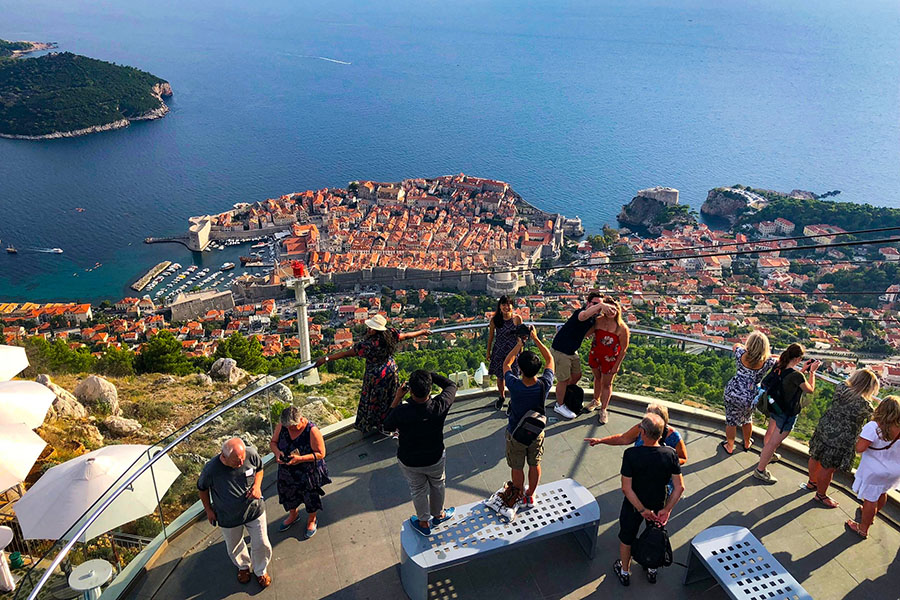 Croatia’s medieval walled city of Dubrovnik is one of Europe’s most overcrowded cities, with the flow of tourists sometimes making it literally impossible to walk inside the historic Old Town. Image: Daniel Slim / AFP
Croatia’s medieval walled city of Dubrovnik is one of Europe’s most overcrowded cities, with the flow of tourists sometimes making it literally impossible to walk inside the historic Old Town. Image: Daniel Slim / AFP
European tourist hotspots like Amsterdam and Dubrovnik are on a crusade to check, or at least, stagger the tides of visitors that swamp their streets each summer.
Here are some examples of the measures taken to combat rising visitor numbers in the era of cheap flights and Airbnb.
Dubrovnik
Croatia’s medieval walled city of Dubrovnik is one of Europe’s most overcrowded cities, with the flow of tourists sometimes making it literally impossible to walk inside the historic Old Town.
The jewel of the Adriatic has seen a huge surge in visitor numbers since scenes from the HBO series “Game of Thrones” were filmed inside its ramparts in 2011.
In 2019, the town of 41,000 people received a record 1.4 million tourists and 4.4 million overnight stays.
That year, local authorities limited the number of cruise ship arrivals to two per day, with no more than 4,000 passengers each at a time.
They also launched an app that uses machine learning and weather forecasts to predict when the Old Town, a UNESCO world heritage site, will be busiest.
By 2022, the number of visitors had fallen to a little over one million people.
Barcelona
Nestled on the coast of the Mediterranean, Barcelona is the capital of the Catalonia region, home to famed Gaudi architectural gems and one of Spain’s best football clubs.
Ada Colau, the leftist former housing rights activist who was mayor of the city between 2015 and June 2023, cracked down on illegal Airbnb rentals that were accused of pricing locals out of the property market.
The city also banned tour groups from entering the historic La Boqueria market during peak shopping times.
In 2022, 9.7 million tourists made overnight stays in hotels and holiday homes in Barcelona, compared with 12 million in 2019.
Venice
Venice, which received 5.5 million visitors in 2019 for a population of 50,000, has for years been on what it calls a “detourism” drive.
In 2021, it banned huge cruise ships from Venice lagoon over concerns about the environmental impact of the huge liners on the city.
Venice has also introduced a tax for overnight visitors and plans to introduce a paid booking scheme for day-trippers.
But the scheme, which would require people to pay between three and 10 euros to enter the city, has been repeatedly put on hold over fears that it will seriously dent tourist revenue and compromise freedom of movement.
Amsterdam
Amsterdam has long been trying to clean up a reputation for rowdy stag parties, drugs and sex that has been partly blamed for an influx of around 20 million visitors a year.
In March 2023, it launched an online campaign aimed at discouraging young British men from travelling to Amsterdam to get high or very drunk, telling them in typically blunt Dutch fashion to “stay away” or risk arrest.
Last week, the city also decided to close a major cruise ship terminal in its centre.
Other recent measures to restore quiet to the city’s historic centre have included a ban on smoking cannabis on the streets of the red-light district.
